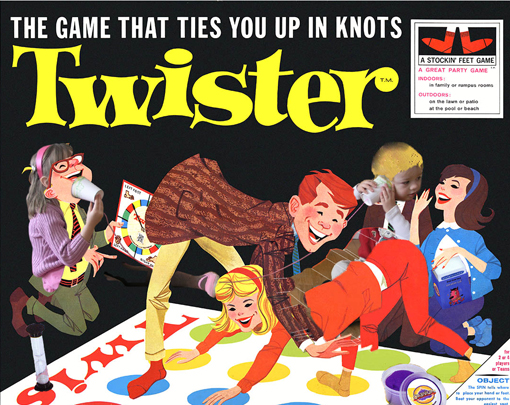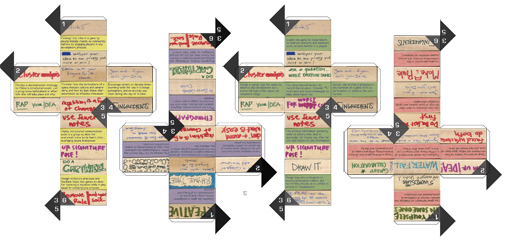Collabo Cubes
Posted on May 8, 2011 | posted by:Design led research is an eye-opener to the capacity of developing creative experiments to alter situations. In the last assignment, I took a long-view approach to threading a variety of activities together in hopes of finding a common trait that connected one to another. These experiments were framed as ‘participatory action research’ carried out in a collaborative manner both in their development, and deployment on the studio class. They each tested a discrete moment in the collaborative process, from structured social interactions, to group formation strategy, and even the environments in which collaboration takes place. The goal was to test, carry out, and reflect on various aspects of collaboration to better understand how to go about it in the future.
The problem at hand was a realization that our studio class had learned, and carried out in a systematic manner, one method of collaboration. Teams typically formed into silos, in which every group member was obligated to contribute to one final solution using a common language. One student dubbed this approach ‘co-authoring’, which sounds nice, but loses the punctual vision of a single author. Whereas a jazz quartet might be an ideal version of individuals collaborating in a parallel creative process, I frequently found myself in a cacophony of noise with many voices, opinions and ideas overlapping in a chaotic tangled mess. Collaboration is like math, because in an ideal setting the end product of a successful collaboration will be greater than the sum of it’s parts. Therefore it isn’t the numbers, but the mechanisms by which numbers are recombined that creates the value of collaboration.
The realization that deigned interactions and experiments have a significant effect on the studio provided fodder for a new strategy and development of a tool to ‘ideate’ collaborative processes. This tool took the form of ‘Collabo Cubes’, consisting of 4 cubes representing the 4 stages of design led research; Plan, Act, Observe, and Reflect. Each face of each cube distilled a collaborative experiment to it’s essence as it related to the corresponding stage of design led research. The Collabo Cubes were designed as a tool to create protocols and platforms for collaborations based on the strengths of each prior experiment.
With one toss of the cubes, an individual or group will arrange the cubes in their respective order of; plan, act, observe and reflect. The resulting syntax of principles provide the impetus for creating methods of collaborating as a team.
Why is this helpful? I have learned in a collaborative setting, a bit of planning goes a long way to leverage latent brainpower and experiment with knowledge generation. This is why designed interactions are engaging for humans. Games and designed interactions activate hidden or underutilized talents (Cranium), make communicating fun (string cups), and break down social barriers (Twister). Now imagine the splendors of borrowing, recombining and hacking these designed interactions to experiment with the generation of new types of knowledge in collaborative settings.

